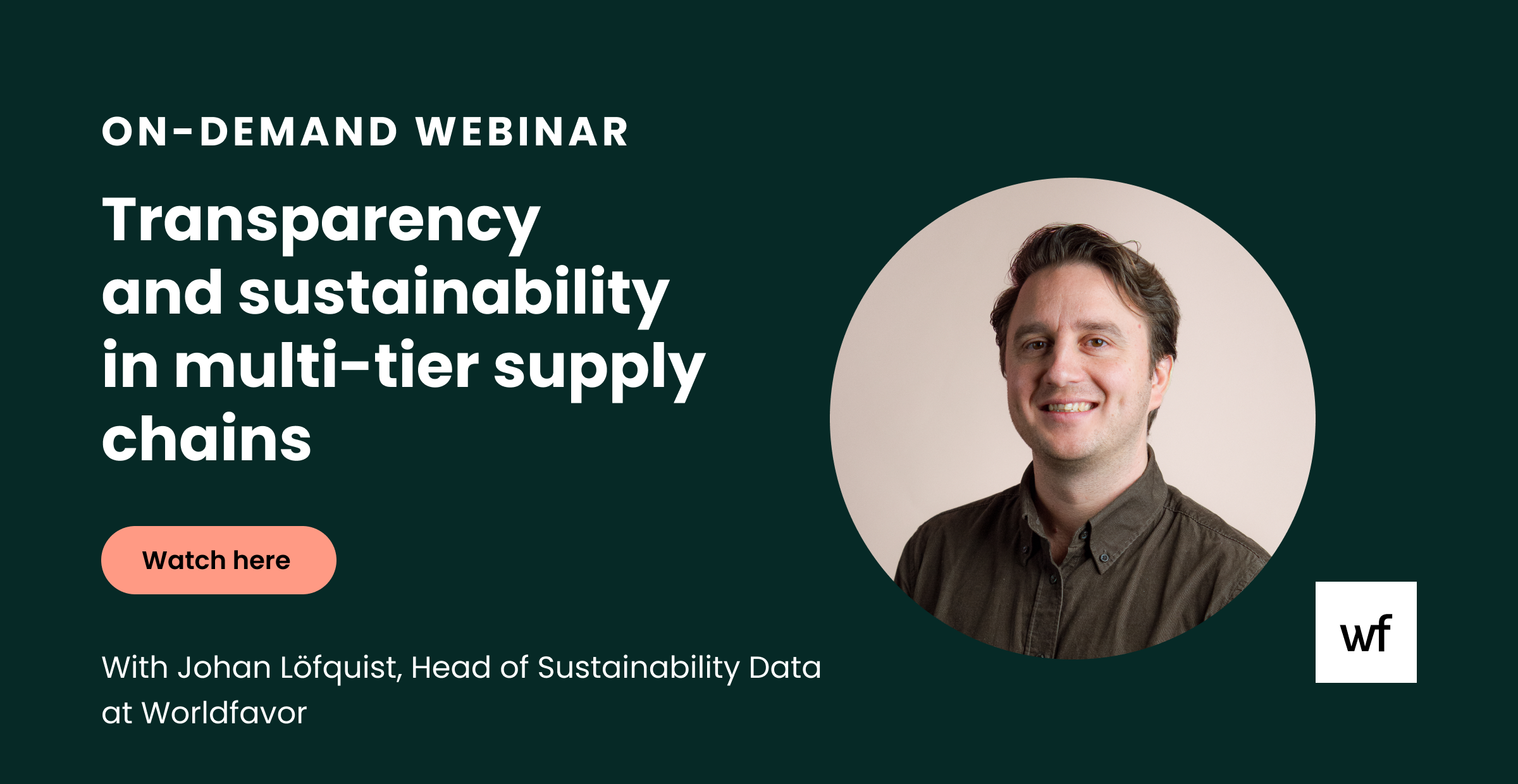What is food waste: the value of a sustainable supply chain – part 1

This is a 2-part blog series about food waste, why you should care about it and how to minimize its existence in your supply chain. In the first part we will go through the basics – what is food waste and why does it occur, and more importantly, why companies should commit to reducing it. In part two of this series, we’ll give you hands-on tips on how to work with food waste reduction.
Avocados from Mexico, Rice from India, and Coconut Milk from Thailand - all under the same roof. The globalized food system has invited products from all corners of the world onto the shelves of our supermarkets. However, as we are provided with an abundance of options, we are likely to overlook a dark side to this: food waste.
What is food waste?
While one-third of the food produced globally is wasted, almost 700 million people around the world are impacted by hunger. On top of that, food waste results in the loss of hundreds of billions of dollars, making it not only an environmental issue but a social and economic one as well.
The food industry is responsible for 8-10% of the total Greenhouse gas emissions. The industry is hugely resource-intensive, requiring immense amounts of energy, water, and land use. On top of that, it contributes to other negative environmental impacts, such as biodiversity loss on land and in oceans. Food waste is not merely a loss of the actual food, but the loss of all the resources put in its production, handling, and transportation. Its toll on the environment is so huge that reducing food waste is considered the most effective action item to combat climate change, according to Project Drawdown.
“Food waste is an ethical outrage”, stated UN’s Secretary-General, António Guterres on UN’s designated International Day for the Awareness of Food Waste and Loss (IDAFLW) on September 29th, 2020. Apart from raising awareness around the issue, the day aims to promote global efforts to meet the Sustainable Development Goal 12.3, which targets to halve global food waste by 2030. Guterres called for businesses and countries to measure food loss and waste and act boldly to reduce it. September 2021 marks the second year of IDAFLW and urgently calls for actions from everyone, businesses included, to reduce food waste and build back a resilient food system.
Int'l Day of Awareness of Food Loss and Waste - UN chief message (29 September 2020)
Where and why does food waste occur?
To grasp the issue of food waste, it’s important to understand it from a supply chain perspective. From production and packaging to distribution and retail. Food waste occurs on every level of the supply chain, and with chains growing longer by the year, waste increases in every stage.
 Food supply chain: Food systems Group, SLU
Food supply chain: Food systems Group, SLU
In light of Covid-19, the world witnessed major supply chain interruptions that resulted in increased food waste. The pandemic exposed the fragility of today’s food systems and was a clear wake-up call for the need for more resilient ones.
Large parts of the global food waste occur in the production, manufacturing, and distribution levels before ever reaching our plates. The causes depend on where it occurs.
Waste occurring on farms and in production is largely caused by climate conditions, harvesting, and handling processes. What is more, the cosmetic standards dictated by retailers and sensitive consumers largely contribute to this as well, such as discoloration, wilting, and imperfect shapes. Every year, 500 million tonnes of food is wasted at the production level globally, comprising 32% of the total waste in the supply chain. 23% of waste occurs in the handling and storage level, 10% during processing and packing, and 13% in distribution and retail – the lack of traceability and visibility across stakeholders is considered one of the main causes of food waste at the distribution level.
Last but not least, 22% of the total global food waste occurs on the consumption level (households and food services). Waste occurring here often relates to poor meal planning, overbuying, date-label confusion, and incorrect storage.
Why companies should commit to food waste reduction
Reducing food waste for companies is integral for reaching sustainability goals. Not only does reduced food waste contribute to reaching environmental goals, but social ones as well. SDG 12.3 calls for halving global food waste per capita at the retail and consumer levels and reducing food loss along production and supply chains by 2030. Reducing food waste contributes to other SDGs as well, including the Zero Hunger goal (SDG 2), through increased security and an even distribution of edible food. Several large food companies have committed to reduced food waste as one of their primary sustainability goals for the coming years. For example, Nestlé has achieved its goal of halving its operational food waste in June 2020, and today 95% of its sites send zero waste for disposal.
With the urgency of the climate crisis, incorporating sustainability goals is transforming into a must-have, rather than a good-to-have. When it comes to food waste, stricter regulations are being put in the food industry that companies must comply with. For instance, EU regulations put legally binding targets to reduce food waste by 2023 and created a reporting framework to standardize the reporting of food waste measures by businesses. Similarly, Sweden has put ambitious strategies and industry guidelines for companies to contribute to the national goal of halving food waste by 2030. Corporations like Axfood are even taking the lead in creating a more sustainable food system by proactively putting forth suggestions to authorities and food businesses. Several of the most important action points relate to reducing food waste through tighter cooperation in the food chain and the adoption of new technical solutions.
An integral facet of contributing to the Sustainable Development Goals and other frameworks is measurability through accurate and quality data. Sustainability Management helps companies keep track of their sustainability data and align their efforts according to several frameworks, including the SDGs.
Want to know how Worldfavor’s digital platform can help you fight food loss and accelerate your sustainability work by aligning with specific SDGs? Download our guide Sustainability Reporting in Worldfavor.
Continue to the next part of the blog series How to tackle food waste in 3 steps – part 2
Related blogs you might like:







%20as%20the%20deadline%20approaches.%20Learn%20about%20compliance%20requirements%2c%20potential%20delays%2c%20and%20key%20updates..png)

